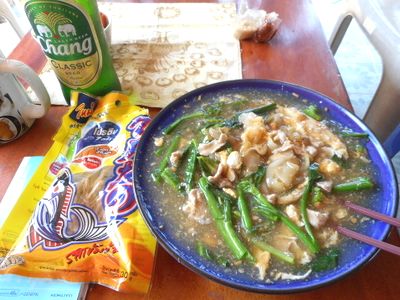First, let’s talk about curry noodles. For the first time in Japan (Tokyo), businessman Min Pun Yaspar opened a Thai restaurant. She has been an advisor to the Thai Culture Study Group for many years. At a social gathering party, she introduced me to “Curry Noodles” (Quiteiogen Curry) from among the many Thai food menus. I ordered it specially when I was in Thailand and ate it, but the “curry noodles” made by Mr. Min was the best taste.
The spicy the curry, the sweeter the noodles (thin noodles are better) will give it just the right taste. In Japan, there is curry rice or rice curry, using rice is a standard item. It is one of the dishes that has been made into Japan now, but it seems that Java curry, Indian curry, Thai curry, etc. originally landed in Japan and the taste of curry unique to the store (each family’s own) was created. It is now a national dish of Japan.
The second noodle story is that there are many types of noodles in Thailand. There will be more than 10 types. First of all, the thickness is large, medium and small, and there are differences in the ingredients of the staple food (rice flour, wheat flour), and in the way of cooking and eating. Of course, there is also ramen (Chinese noodle Bammi). Rice flour (Quiteiyo) and wheat flour Bammi can be cold or warm, and the ingredients can be bean sprouts, fish dumplings, shrimp, or meat.
I love soy sauce flavored pack shoyu. It’s yakisoba (baked noodle), so thick noodles are good, and the pack (vegetables), noodles, and soy sauce (shoyu) dishes are the best.

*Chinese noodle Bammi!